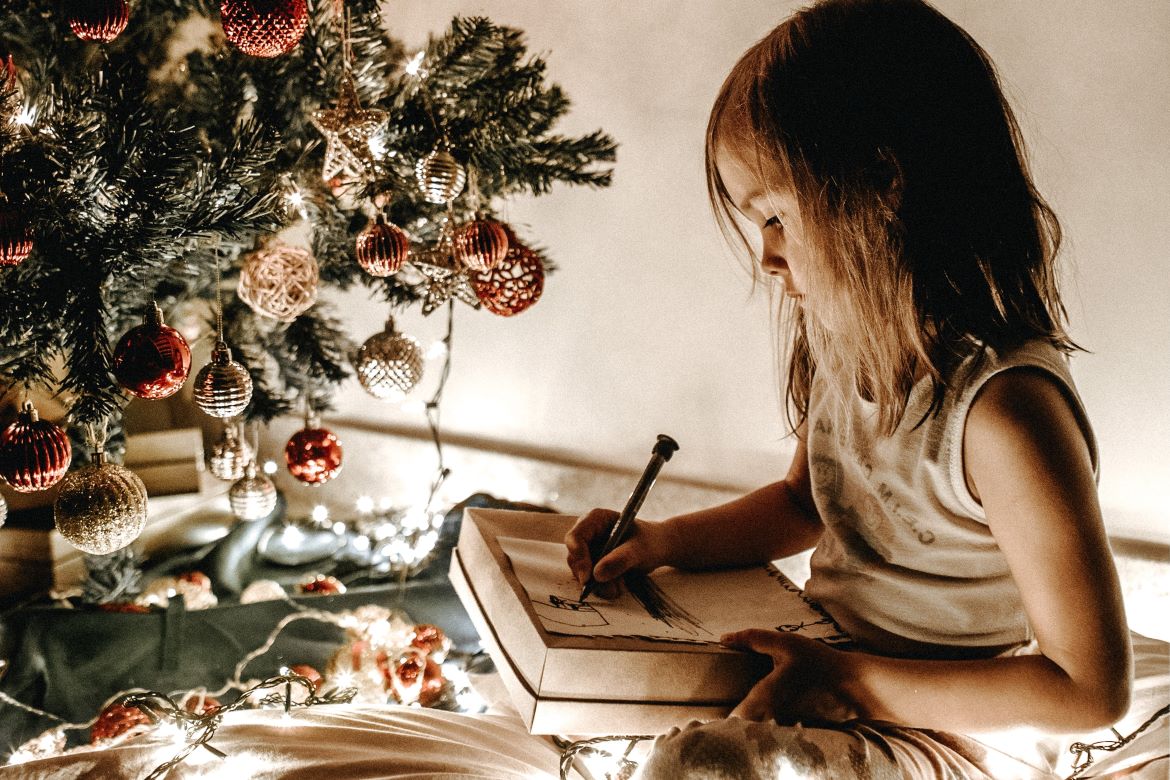By Sarah Moore
Growing up, I always wanted a white Christmas – there was just something magical about waking up to a blanket of snow on that special day. It was the perfect day to stay inside with all the physical and emotional warmth Christmas offered before diving into the snow and playing outside. I still hope for a white Christmas, but these days, what’s even more important to me is a green one. By a green Christmas, I don’t mean I want to see the grass instead of the snow. Instead, I mean I want one that’s still as heartwarming as those from years gone by, but a much more sustainable version of that with which I was raised.
After all, conscious parenting and the need for sustainability apply all year round, including during the holidays. Raffi’s Child Honouring course includes a full section about sustainability for those who want to learn more.
With that in mind, here are eight great tips to help you have a green Christmas.
1. If you’re going to get a tree, get a real one.
“With 8 million real trees in the process of being purchased this Christmas, the idea of saving one from the axe might be prompting the move to fake ones this year in the belief that they are more environmentally friendly.
But environmentalists and energy analysts would disagree. Take one key product detail of these thousands of artificial trees – they are made of plastic. It is the manufacture of the plastic tree, from oil, which creates most of its carbon footprint: around two thirds, according to Dr John Kazer of the Carbon Trust. Another quarter is created by the industrial emissions produced when the tree is made. They are also often shipped long distances before arriving in the shop and then your home.
A 6.5ft artificial tree has a carbon footprint equivalent to about 40kg of greenhouse gas emissions – which is more than twice that of a real tree that ends its life in landfill and more than 10 times that of a real tree which is burnt…” (Source)
2. Send electronic cards instead of paper ones.
I confess that I love touching paper. Books, cards, you name it; paper is practically my love language. However, as much as I love cards, they’re just not worth their negative impact on sustainability.
The average letter has a carbon footprint of about 29 grams of CO2. The carbon footprint of a normal email footprint is much less, about 4 grams of CO2. (Source)
With just a couple of exceptions, we’ll be sending e-cards this year.
If the idea of not sending paper cards troubles you, you can take small steps. Strike 20 names from your list. If you can’t do that, try 10. Start somewhere.
You might also like: Teaching Kids How to Protect the Earth and The Best (Greener) Stocking Stuffers for Kids and Kids at Heart
3. Trade gifts for experiences.
As conscious as we are about sustainability the rest of the year, it’s really tempting to continue habits we’ve held onto since we were kids. Part of that, of course, is gift giving. To be clear, I’m not saying don’t give gifts. It makes sense, however, to consider the planet and our impact when we’re thinking about how to put a smile on a loved one’s face.
Here are a few green Christmas “experience gifts” that people in our family have loved:
- Dad and Grandad: a gift certificate for a round of golf
- Mum and Grandma: a designated “Girls’ Day” at the art museum
- Kids: a special visit to the local animal sanctuary
- All of us: Tickets to the Nutcracker Ballet











